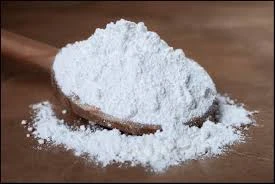
Effects of Sodium Metabisulfite in Beverages on Flavor and Preservation Quality
Understanding Sodium Metabisulfite in Drinks
Sodium metabisulfite, a chemical compound often recognized by its E number E223, is a common additive in the food and beverage industry. It serves multiple purposes, primarily as a preservative, antioxidant, and a means of controlling microbiological growth. Its presence in drinks, especially in wines, soft drinks, and some juices, has sparked discussions regarding safety, health implications, and usage regulations.
What is Sodium Metabisulfite?
Sodium metabisulfite is a white crystalline powder that is derived from sulfur dioxide. When dissolved in water, it releases sulfur dioxide, which is effective in preserving the freshness of beverages by inhibiting the growth of bacteria and yeast. This property makes it particularly useful in the production of wines and fruit juices, where oxidation can alter flavor and quality.
Uses in Beverage Production
In the wine industry, sodium metabisulfite is crucial. During the winemaking process, it is used to sterilize equipment and prevent unwanted fermentation by wild yeast and bacteria. This ensures that the wine develops the desired flavors without spoilage. In addition to preventing spoilage, it also helps in maintaining the wine's color and aroma.
Beyond wine, sodium metabisulfite is also employed in soft drinks and certain fruit juices. It is used to preserve the freshness of these products, preventing oxidation that can lead to off-flavors and loss of color. In some cases, it is used to clarify beverages, aiding in the removal of undesirable particles.
sodium metabisulfite in drinks

Health Concerns and Regulations
While sodium metabisulfite is generally regarded as safe when used in appropriate amounts, it can pose health risks for some individuals. Those who are sensitive to sulfites may experience allergic reactions, which can include symptoms like headaches, difficulty breathing, and skin rashes. The FDA and other health organizations have established guidelines on the maximum allowable levels of sulfites in food and beverages to mitigate these risks. Typically, products containing more than 10 parts per million (ppm) of sulfites must carry a warning label indicating their presence.
For consumers, it is essential to read labels carefully, especially for individuals with sulfite allergies or sensitivities. Awareness and understanding of ingredient lists can help mitigate any adverse reactions.
Consumer Perception
The presence of sodium metabisulfite in drinks often raises questions about natural versus artificial ingredients. Many consumers today are leaning towards products that are labeled natural or organic, which typically means they contain fewer preservatives. However, understanding the role of sodium metabisulfite in preserving quality and safety is crucial. The debate on additives reflects broader trends in consumer preference, where perception often outweighs chemical properties.
Conclusion
Sodium metabisulfite plays a vital role in the beverage industry, primarily for its preservative qualities that help maintain the flavor, color, and overall quality of drinks. While it is largely safe for the general population, those with sensitivities must remain vigilant. The ongoing dialogue about sulfites and other additives in beverages highlights the balance between food safety, preservation, and consumer preferences. As awareness grows, both consumers and manufacturers will continue to navigate the complex landscape of food additives, ensuring that safety and quality remain paramount in the production of drinks.
-
Pure Sodium Dichloroisocyanurate Dihydrate | Powerful DisinfectantNewsAug.29,2025
-
Industrial Chemicals: Quality & Purity for Every IndustryNewsAug.28,2025
-
Nitrile Rubber Honoring Strict Production StandardsNewsAug.22,2025
-
Aspartame Ingredients Honoring Food Safety ValuesNewsAug.22,2025
-
Fertilizer for Balanced Plant NutritionNewsAug.22,2025
-
Cyanide Gold Processing with High Purity AdditivesNewsAug.22,2025
-
Formic Acid in Textile Dyeing ApplicationsNewsAug.22,2025
Hebei Tenger Chemical Technology Co., Ltd. focuses on the chemical industry and is committed to the export service of chemical raw materials.
-

view more DiethanolisopropanolamineIn the ever-growing field of chemical solutions, diethanolisopropanolamine (DEIPA) stands out as a versatile and important compound. Due to its unique chemical structure and properties, DEIPA is of interest to various industries including construction, personal care, and agriculture. -

view more TriisopropanolamineTriisopropanolamine (TIPA) alkanol amine substance, is a kind of alcohol amine compound with amino and alcohol hydroxyl, and because of its molecules contains both amino and hydroxyl. -

view more Tetramethyl Thiuram DisulfideTetramethyl thiuram disulfide, also known as TMTD, is a white to light-yellow powder with a distinct sulfur-like odor. It is soluble in organic solvents such as benzene, acetone, and ethyl acetate, making it highly versatile for use in different formulations. TMTD is known for its excellent vulcanization acceleration properties, which makes it a key ingredient in the production of rubber products. Additionally, it acts as an effective fungicide and bactericide, making it valuable in agricultural applications. Its high purity and stability ensure consistent performance, making it a preferred choice for manufacturers across various industries.





